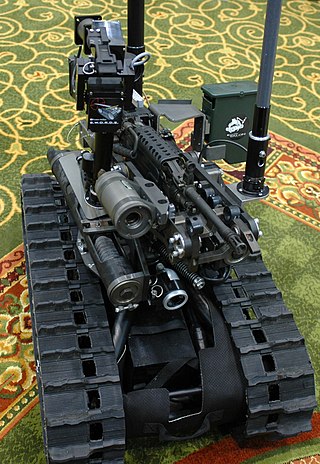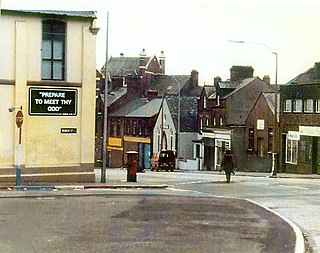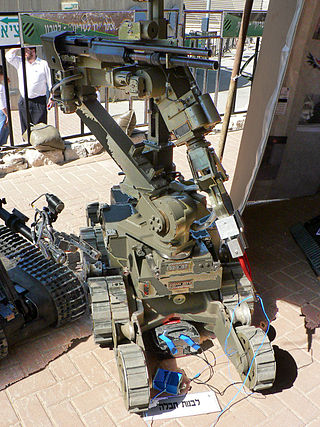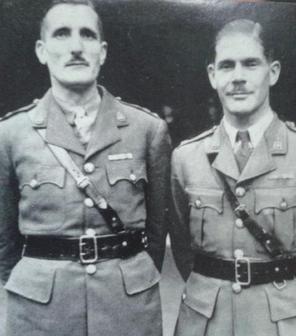
Bomb disposal is an explosives engineering profession using the process by which hazardous explosive devices are disabled or otherwise rendered safe. Bomb disposal is an all-encompassing term to describe the separate, but interrelated functions in the military fields of explosive ordnance disposal (EOD) and improvised explosive device disposal (IEDD), and the public safety roles of public safety bomb disposal (PSBD) and the bomb squad.

The Royal Logistic Corps provides logistic support functions to the British Army. It is the largest Corps in the Army.

Yahalom is a sayeret unit of the Israeli Combat Engineering Corps of the Israel Defense Forces (IDF).

A clearance diver was originally a specialist naval diver who used explosives underwater to remove obstructions to make harbours and shipping channels safe to navigate, but the term "clearance diver" was later used to include other naval underwater work. Units of clearance divers were first formed during and after World War II to clear ports and harbours in the Mediterranean and Northern Europe of unexploded ordnance and shipwrecks and booby traps laid by the Germans.

United States Navy Explosive Ordnance Disposal technicians render safe all types of ordnance, including improvised, chemical, biological, and nuclear. They perform land and underwater location, identification, render-safe, and recovery of foreign and domestic ordnance. They conduct demolition of hazardous munitions, pyrotechnics, and retrograde explosives using detonation and burning techniques. They forward deploy and fully integrate with the various Combatant Commanders, Special Operations Forces (SOF), and various warfare units within the Navy, Marine Corps, Air Force and Army. They are also called upon to support military and civilian law enforcement agencies, as well as the Secret Service.

The Foster-Miller TALON is a remotely operated vehicle, and it is a small, tracked military robot designed for missions ranging from reconnaissance to combat. It is made by the American robotics company QinetiQ-NA, a subsidiary of QinetiQ.

The Royal Army Ordnance Corps (RAOC) was a corps of the British Army. At its renaming as a Royal Corps in 1918 it was both a supply and repair corps. In the supply area it had responsibility for weapons, armoured vehicles and other military equipment, ammunition and clothing and certain minor functions such as laundry, mobile baths and photography. The RAOC was also responsible for a major element of the repair of Army equipment. In 1942 the latter function was transferred to the Royal Electrical and Mechanical Engineers (REME) and the vehicle storage and spares responsibilities of the Royal Army Service Corps were in turn passed over to the RAOC. The RAOC retained repair responsibilities for ammunition, clothing and certain ranges of general stores. In 1964 the McLeod Reorganisation of Army Logistics resulted in the RAOC absorbing petroleum, rations and accommodation stores functions from the Royal Army Service Corps as well as the Army Fire Service, barrack services, sponsorship of NAAFI (EFI) and the management of staff clerks from the same Corps. On 5 April 1993, the RAOC was one of the corps that amalgamated to form The Royal Logistic Corps (RLC).
William Dennis Goodchild Hunt MBE served a full career in the British Army as an Ammunition Technician (AT) and Ammunition Technical Officer (ATO) and served in the UK, mainland Europe as well as the Middle and Far East.
An ammunition technician (AT) is a British Army soldier, formerly of the Royal Army Ordnance Corps but since 1993 of the Royal Logistic Corps, trained to inspect, repair, test, store, and modify all ammunition, guided missiles, and explosives used by the British Army. These technicians are also trained to use demolition to safely dispose of individual items of ammunition and explosives (EODs) or to conduct logistics disposal of bulk stocks of multi items. After gaining sufficient experience, those who show the appropriate qualities are given extra training to render safe improvised explosive devices (IEDs) by a process called improvised explosive device disposal. Experienced ATs may be called to give evidence as expert witnesses in criminal or coroner's courts in relation to ammunition or explosives or to EOD and IEDD duties.

An ammunition technical officer (ATO) is an officer involved in all aspects of the army, air force, and navy's use of ammunition. This includes: bomb disposal, clearance of ERW, explosives accident investigation, procurement, in service management, storage, and inspection and repair.

The Royal Australian Army Ordnance Corps (RAAOC) is the Corps within the Australian Army concerned with supply and administration, as well as the demolition and disposal of explosives and salvage of battle-damaged equipment. The Corps contains clerks, operator supplies, petroleum operators, parachute riggers and ammunition technicians. Members of the Corps are nicknamed Roaches.
11 Explosive Ordnance Disposal and Search Regiment RLC is a specialist regiment of the British Army's Royal Logistic Corps (RLC) responsible for counter terrorist Explosive Ordnance Disposal (EOD), the safe recovery or disposal of conventional munitions. The regiment also has an ammunition inspectorate role supporting the Inspector Explosives (Army). With headquarters in Didcot, the regiment has sub units geographically based throughout the UK to provide a nationwide high readiness response capability in support of the police.

321 EOD & Search Squadron, 11 EOD Regiment RLC is a unit of the British Army responsible for Explosive Ordnance Disposal and Search duties in Northern Ireland.

MarkV-A1 or Mark5-A1 is a bomb disposal robot designed by Northrop Grumman for the purpose of handling potential explosives without risking any lives. It is part of the Remotec ANDROS line, which includes other robotic EODs. First responders around the world depend on the MarkV to handle potential hazards and explosives from outside the danger zone. Typically, police forces and departments in large cities have a designated bomb squad or unit for the purpose of handling potential explosives as well as hazardous materials or threats; and the MarkV is a technological feat that several of these units have in their arsenal for exactly that reason.
Lieutenant Colonel Stephen George Styles, GC, usually known as George Styles, was a British Army officer and a bomb disposal expert in the Royal Army Ordnance Corps (RAOC). He received the George Cross for his service in defusing terrorist bombs in Northern Ireland in the 1970s.

Brigadier Robert Llewellyn Jephson Jones, GC was a British Army officer and a recipient of the George Cross. Along with Lieutenant Bill Eastman, he was awarded the George Cross for incredible courage in dealing with some 275 unexploded bombs on the island of Malta during the Second World War.
Warrant Officer Class 1 Barry Johnson, GC is a former British Army soldier of the Royal Army Ordnance Corps who was awarded the George Cross for his gallantry in defusing a mortar bomb in Derry, Northern Ireland on 7 October 1989. The device detonated, causing him serious injury. Notice of his award appeared in the London Gazette on 6 November 1990.

Unmanned systems of the British Army is a list of all modern and in service remote and unmanned surveillance, reconnaissance, bomb disposal and combat systems of the British Army, as of May 2023.

The Ordnance Corps (ORD) is a combat support corps of the Irish Army, a branch of the Defence Forces, that has logistical and operational responsibility for military ordnance in Ireland. The logistical role of the Army Ordnance Corps is to provide technical support to the Defence Forces for the procurement, storage, distribution, inspection, maintenance, repair and disposal of all items of ordnance equipment. The operational role of the Ordnance Corps is to train personnel for and provide the state's bomb disposal capability.
Lieutenant-Colonel John Gaff was a British Army officer who was the senior bomb disposal expert during his service in Northern Ireland in the mid 1970s. He was awarded the George Medal for his personal courage during bomb disposal operations. He was president of the Gallantry Medallists League from 2002 to 2008.















